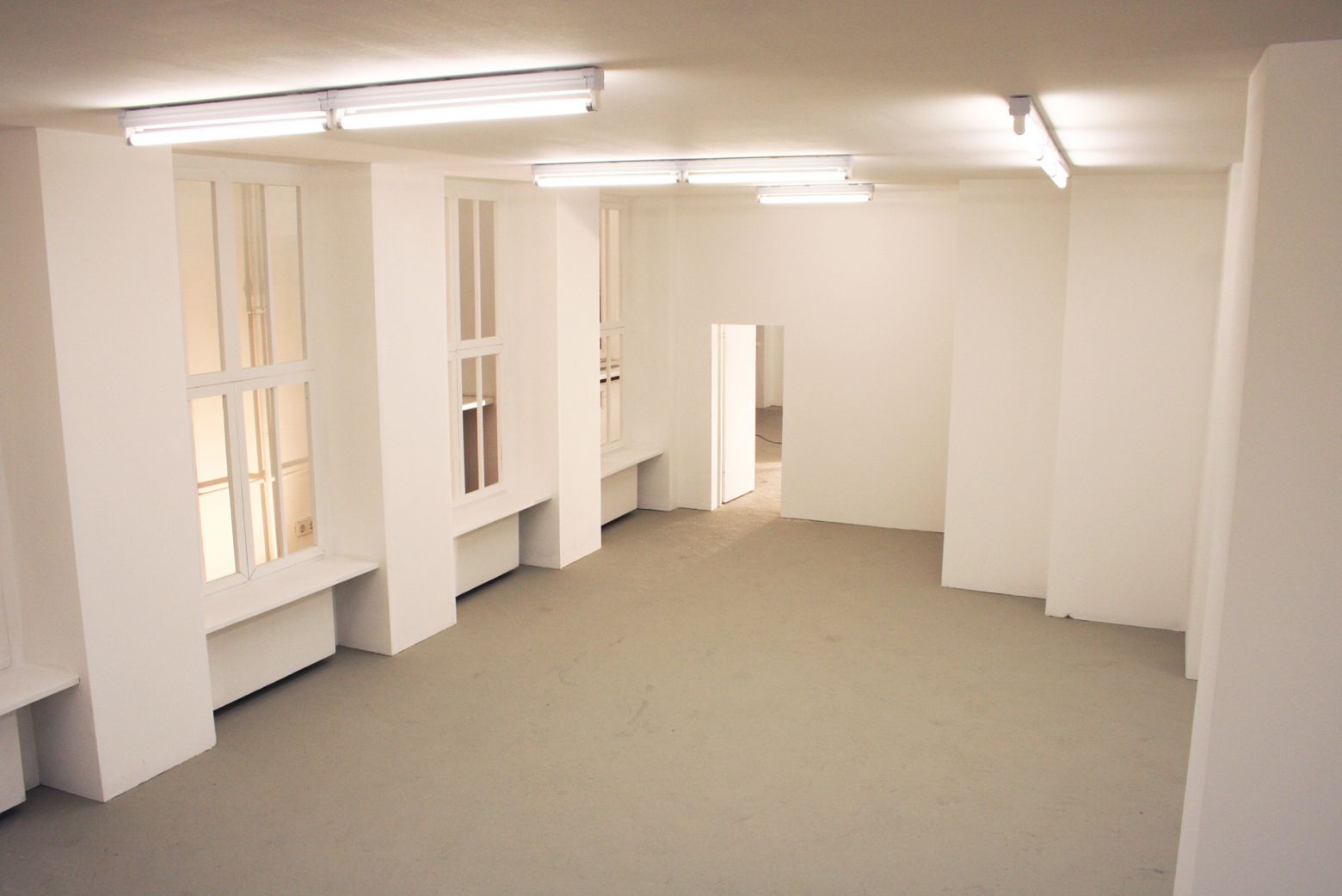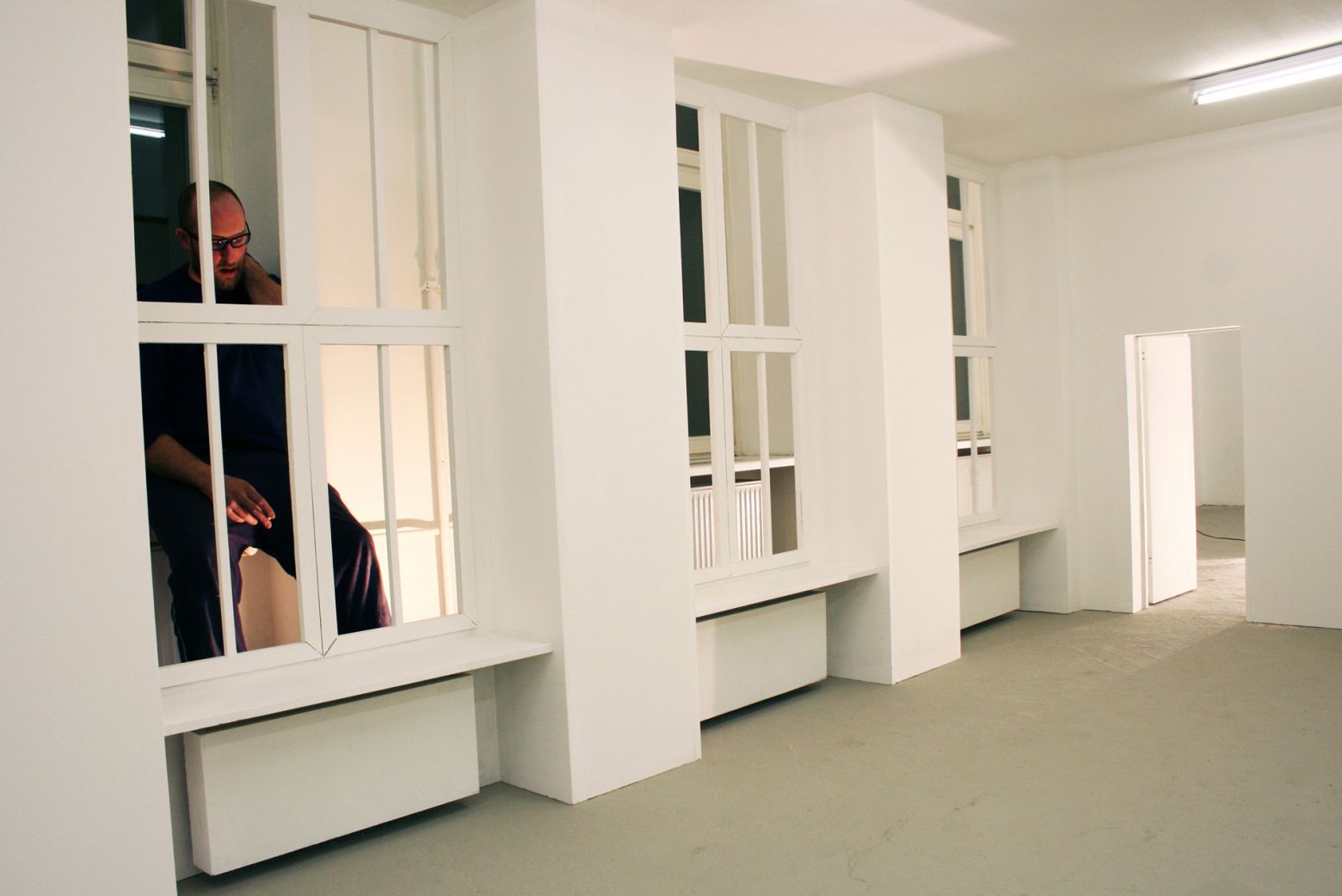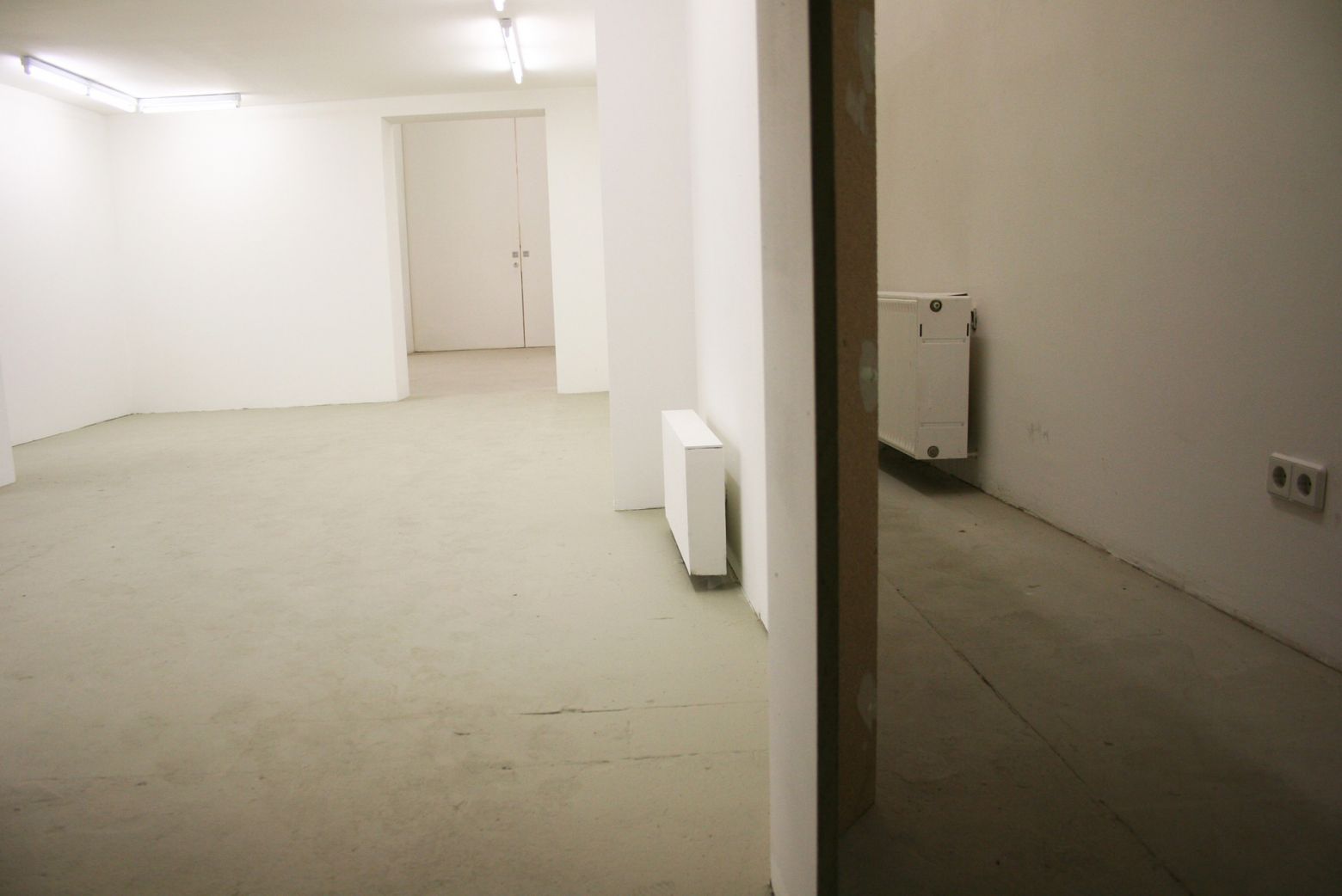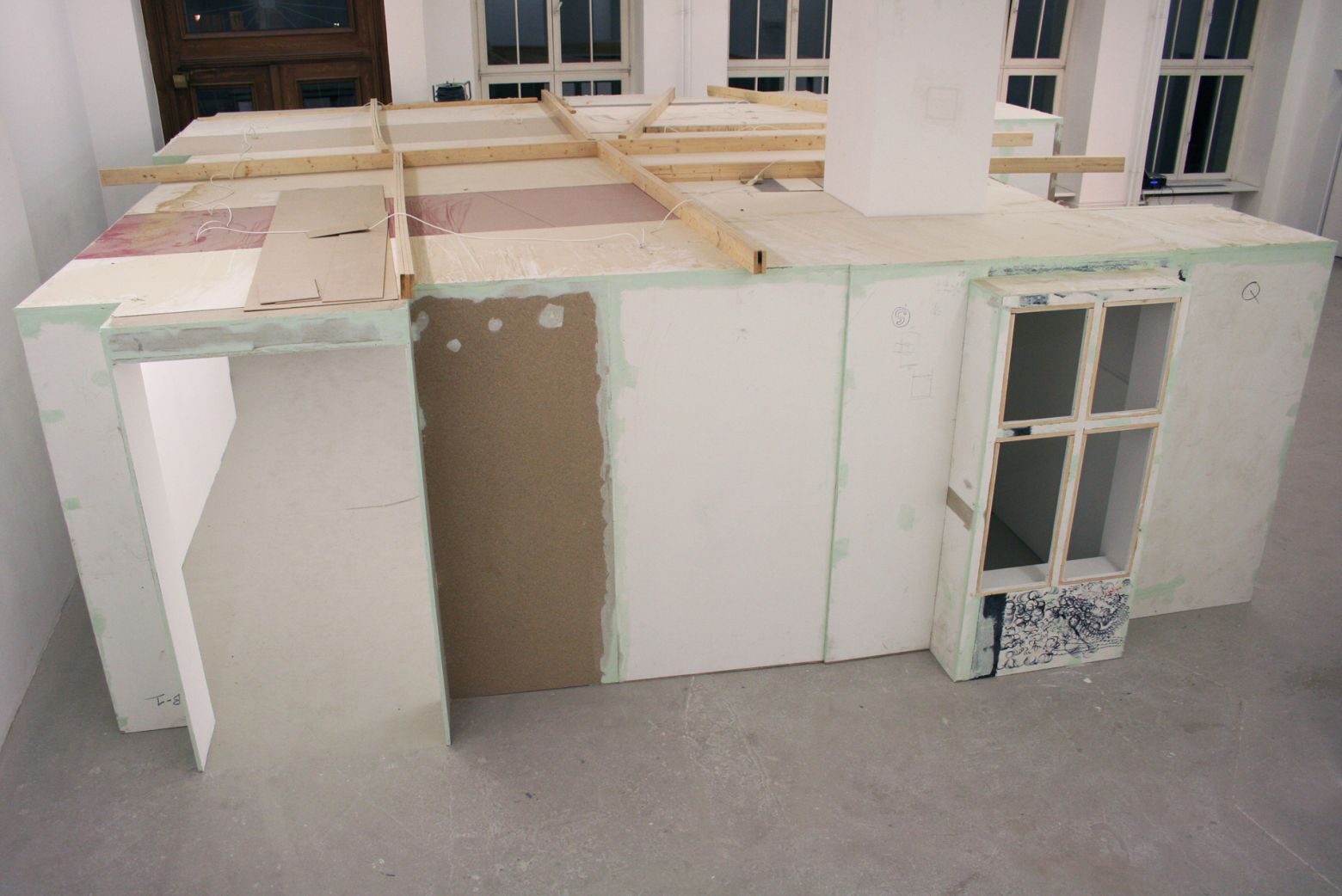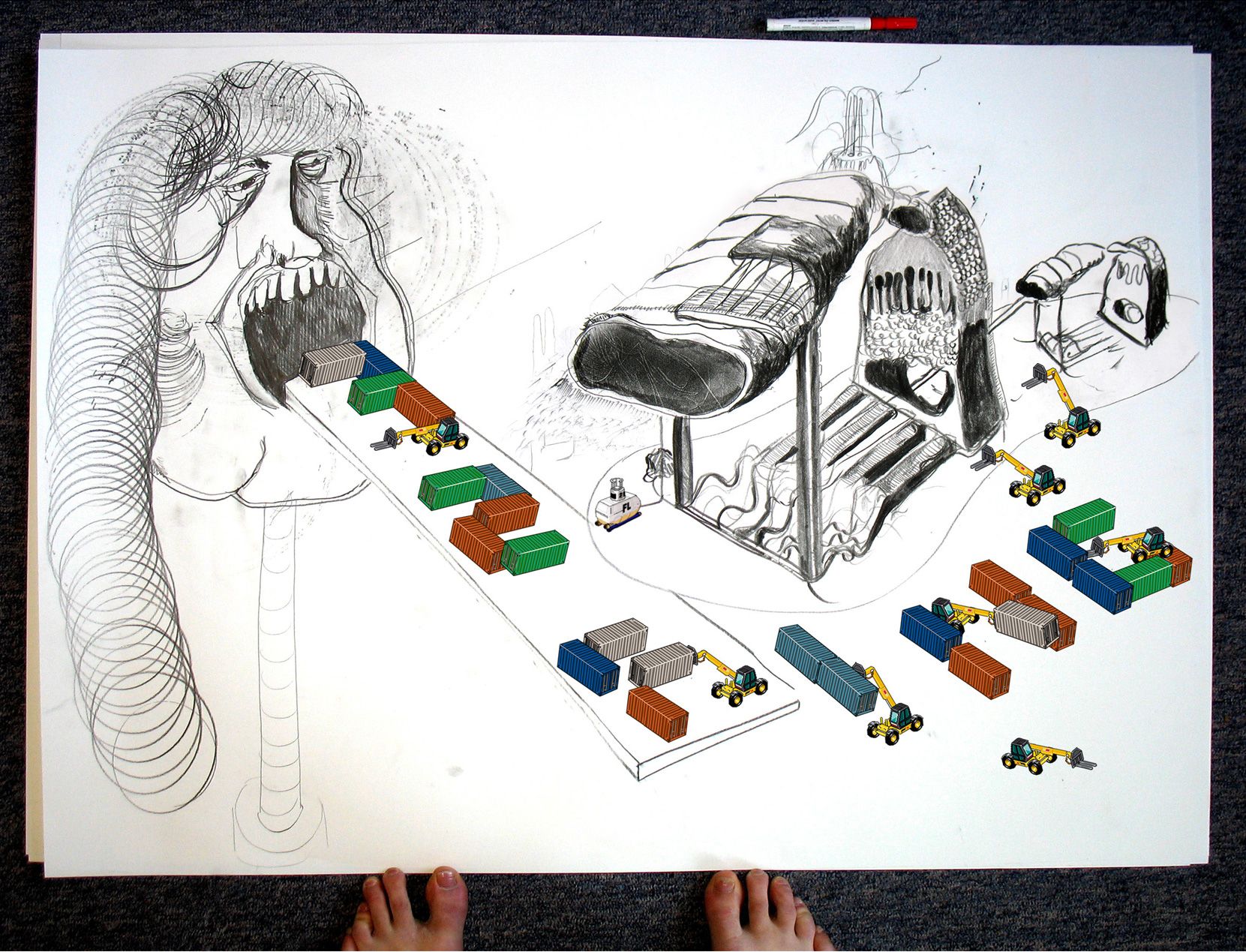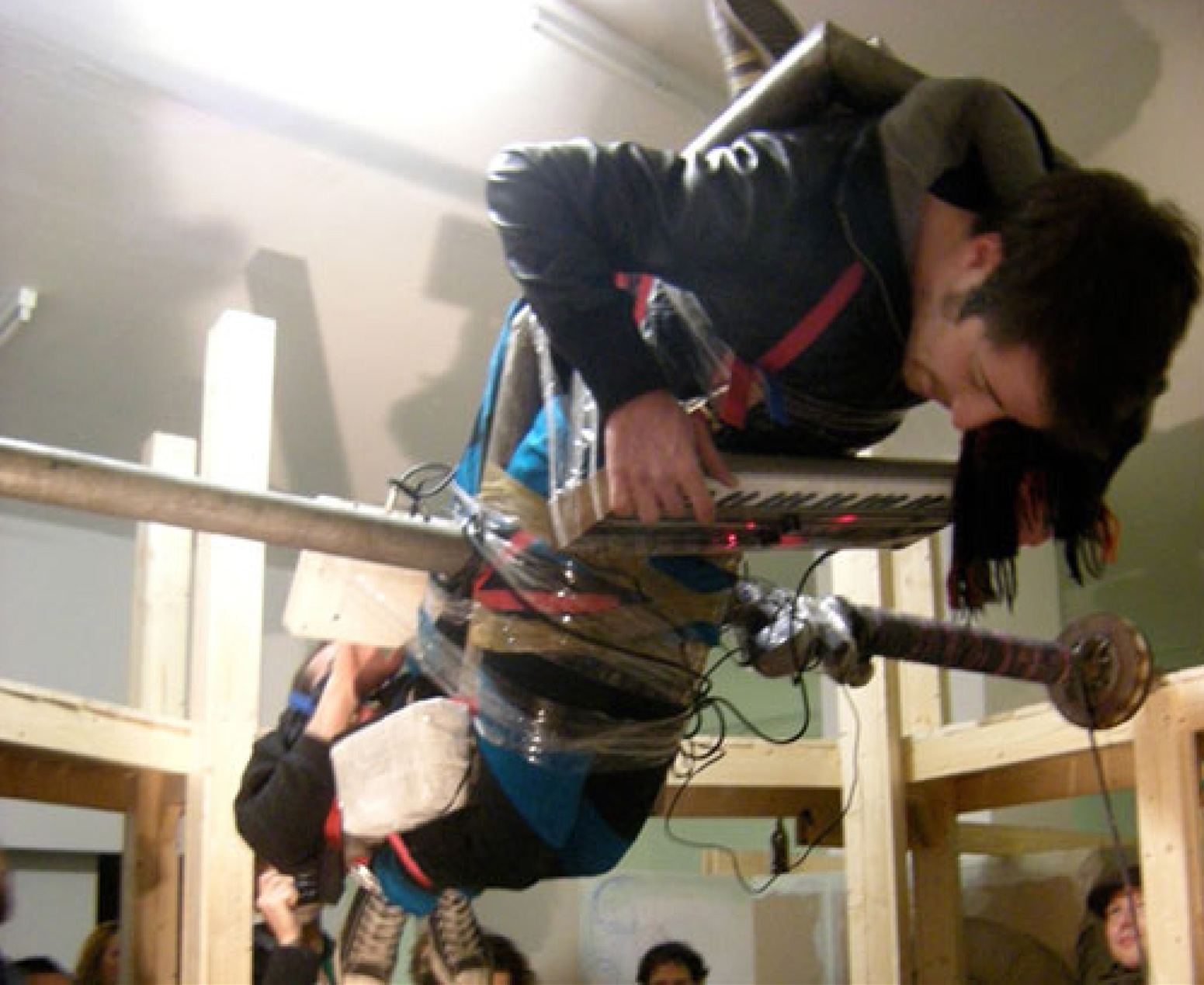32 Fingers, Program, Berlin, 2008
32 Fingers, 2008
Exposition avec Philip Vormwald, PROGRAM - Initiative for Art + Architectural Collaborations, Berlin
● Présentation de Thirty-two Fingers (english)
Sophie Dejode, Bertrand Lacombe, Philip Vormwald, PROGRAM, Berlin, 2008
Read more
Thirty-two Fingers, a three-week collaborative exhibition by Sophie Dejode, Bertrand Lacombe and Philip Vormwald, seeks to negate institutional strictures by manipulating our perception of scale, proportion and repetition; the same formal devices traditionally employed to enforce convention. By replicating PROGRAM's exhibition space at a smaller scale within the exhibition space, the artists have effectively freed the gallery of its mandate to only exhibit architecture related projects; The mini-PROGRAM, therefore, will host 4 separate openings between the 15th and 29th of March, 2008 – all of which will feature work that may deviate from PROGRAM's normal curatorial direction.
The institutionalization of formal architectural and spatial devices like scale, proportion and repetition finds its origin in the architecture treatises of classical antiquity. The ancient Greek, the Romans, the architects of the Renaissance, the 18th century neo-Classicists and more recently, the postmodernists, have in one way or another, imposed, sustained or indexed an architecture that is determined by strict design rules or tenets. Rules for design, like social codes of conduct, are often meant to impart a sense of civic cohesion. The proportions of Greek temples, (determined by the lower diameter of the columns), have been endlessly replicated to invoke a sense of spatial harmony; The Roman Empire laid out repeating street grids to imprint their control on newly conquered cities; In Beijing, the Tiananmen Square (440,000 square meters) was scaled to illustrate the insignificance of the individual compared to the state.
Thirty-Two Fingers, the number of fingers originally shared by the three artists, provides a fresh look at how artistic practices can continue to critically engage the institution. Through an ostensibly simple copy-paste-shrink sequence of Photoshop operations performed on the gallery's floorplan, the artists were able to put forth a radical critique of PROGRAM's organizational, functional and conceptual structures. Who will direct and curate mini-PROGRAM ? Can a gallery be a sculpture ? Is it an object or a container ?
